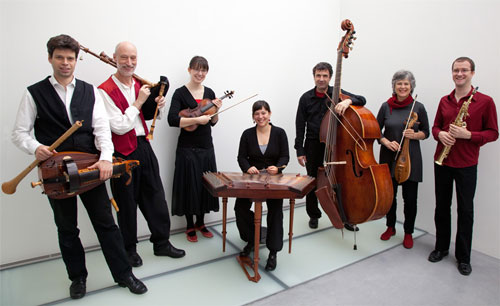Folk music of Switzerland
Due to the lack of the detailed documents, little is recognized about the Swiss traditional music previous in the 19 th century. Some of ...
http://worldhitz4u.blogspot.com/2014/03/folk-music-of-switzerland.html
Due
to the lack of the detailed documents, little is recognized about the Swiss
traditional music previous in the 19th century. Some of the 16th
century lute tablatures have reconstructed into authentic instrumental arrangement,
though, the first main source of information arrival during in the 19th
century repertories of the traditional chants, and composition done by
musicologist like Hanny Christen. One of the oldest types of the traditional
music was the Swiss chant known as Kujreihen; it is an agricultural Alpone
chant in the Lydian mode. The folk instruments include hammered dulcimer,
shawm, alphorn, fife, castanets, rebec, cittern, bagpipe, castanets and
hurdy-gurdy.

source of picture: www.tritonus.ch
In
the beginning in the 19th century, Swiss traditional music was
vastly done by ensembles made of traveling artists and solo performances using
an instrument, with only a few duos. In the 30s, though, the Swiss military was
known, dominating to the creation of brass ensembles that utilized current instruments.
These instruments, extremely is brass or wind, and it was created much better
than those played by nomadic, and artists introduced them back to their
locality. Indigenous players incorporated these bands, which played dance music
for festivals and other festivities. Dance pattern which include mazurka,
polka, waltz and schottische.
In
the year 1829, the accordion was innovated in Vienna, and it was extensive to
Switzerland by the year 1836. The accordion was renowned because it was
relatively easy to play and cheap to get, and took only one artist to play the
song and supplement. During in the 1850s, the accordion was an essential
section of Swiss traditional music, and semi- professional bands were emerging
to play at large social dances. Couple with the brass ensembles come cord
instruments such as the double bass and violin; cord ensembles later started to
replace the older brass ensembles. The accordion, though, did not make an emergence
in these dance ensembles until around the year 1903, and it finally substituted
the two violins which had become standard.
Following
the World War II, Switzerland became more heavily developed, and music shifted
from the cities like Zurich. Rural traditional music became the very renowned
pattern for middle-level spectators, and artists like Stocker (Stocker Sepp)
became popular over the country. Stocker knew his spectator liked the exotic
acclaim of the rural music, and so he introduced the folk costumes from
Unterwalden for his ensemble. This was the starting of laendlermusic.
In
the urban region of the Switzerland, traditional music started to combine with
the current patterns, like the jazz and the foxtrot, while the saxophone
substituted the clarinet. In the beginning in the 1930s, the Swiss government
started to inspire a national uniqueness which was different from Germany other
neighbouring countries. Laendlermusic became related with this uniqueness and
increased even more famous.
Following
the World War II, though, laedlermusic rapidly increased less famous with the
influx of imported patterns. The filed also increased less different, with more
standardized ensemble methods and only four or five dance kinds in the
collection. In the 60s, trios made up of two accordions and a double bass were
the most popular method, and many Swiss people felt it was civic rights to
preserve this custom and protect it against evolve. They have vastly achieved
in stopping the change, but the filed has increased stagnant and much less
renowned. There are still famous artists such as Carlo Brunner, Markus
Flueckiger, Res Schmid, Willi Vzalotti, and Dani Haeusler, but also the total
supporter base has shrunk hugely
During
in the late 1990s, and particularly in the 2000s from around the year 2008 to
the present, the family ensemble known as Oesch’s die Dritten, a yodeling
family from the Bernese Oberland, have been enjoying achievement. Their method
is a Schwyzeroergeli (small accordion) which is played by Hans Oesch, a guitar,
an electric bass, and a large accordion.
The
rural Appenzell area is a main point of the traditional music. Whilst other
sections of the Switzerland accepted the accordion (Langnauerli and
Schwyzerorgeli) during in the 19th century, Appenzell kept the
violin and hammered dulcimer. Cord music from Appenzell is famous all over the
Switzerland. In its initial plan (two violins, cello, dulcimer and contrabass)
is of great importance, while the accordion and piano are also featured in some
of the creations.
